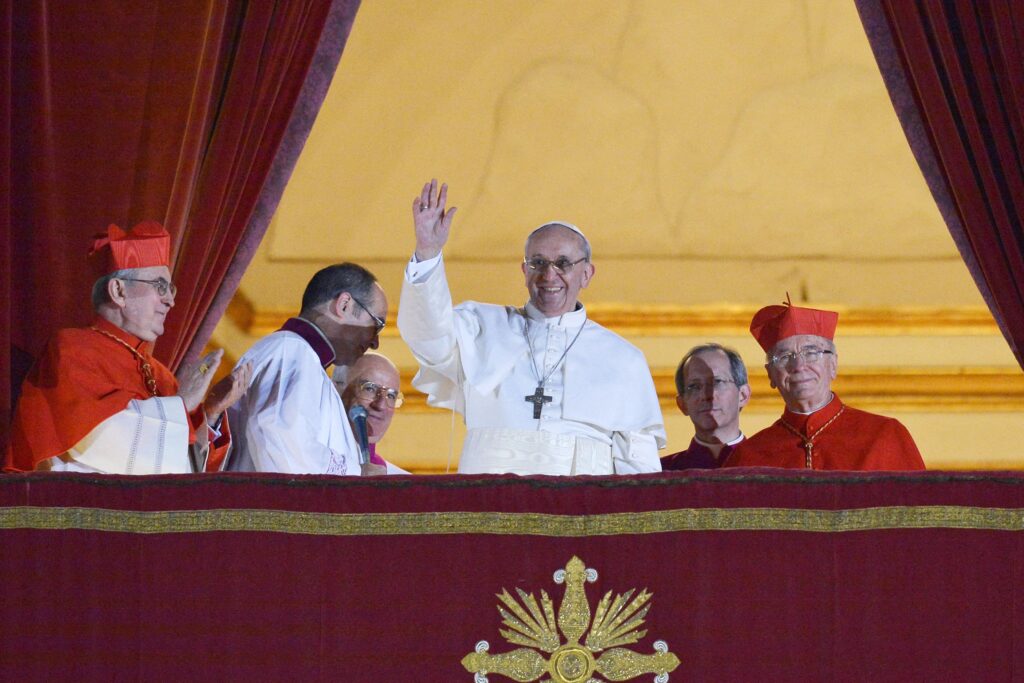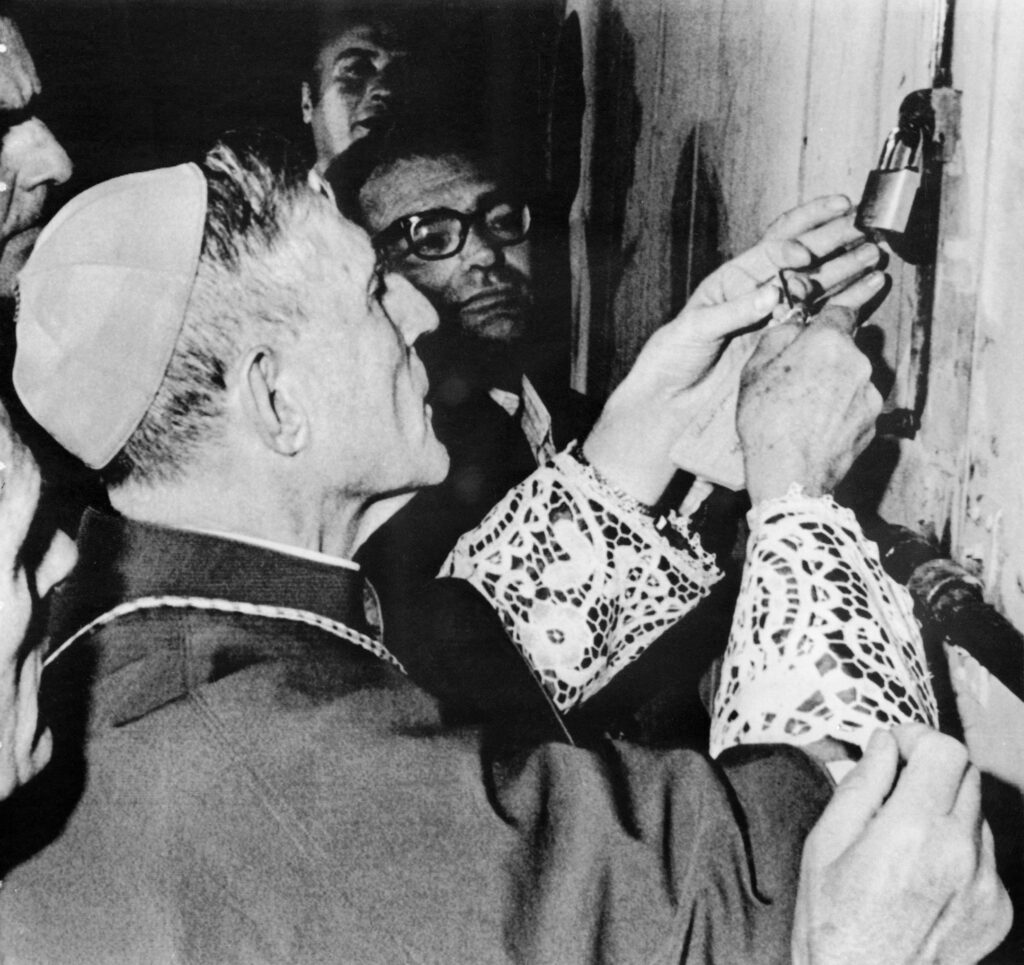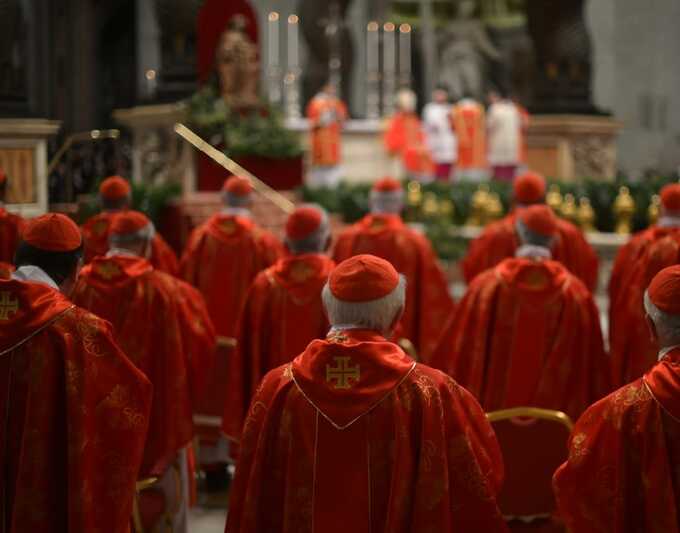Here’s what will occur upon the death of Pope Francis
Embalmed hearts, 3 different coffins, and secretive power struggles: What happens when popes die.
With Pope Francis in hospital with pneumonia in both lungs, the world is on high alert for an extraordinary news event: The death of a pontiff.
Francis, who lost part of a lung to a respiratory infection in his youth and has been plagued by ailing health recently, last year approved a stripped-down funeral for himself, eschewing some of the more arcane rites and rituals that take place when a pope passes away.
But his death, whenever it happens, is still set to immediately kick off a tightly choreographed series of events, refined over centuries and hundreds of dead popes. Some Vatican traditions date back to Ancient Rome.
At the end of the spectacle, a new leader of the Catholic church will be selected in a high-stakes election dramatized in the Oscar-nominated thriller “Conclave,” with progressive and conservative cardinals vying for control of an institution with a billion followers globally.
The death
It is traditionally the job of the camerlengo (a senior Vatican official) to confirm the death of a pope. Currently, that position is held by Irish-born Cardinal Kevin Farrell.
If tradition stands, it will be Farrell who visits Pope Francis’ body in his private chapel and calls out his name to rouse him. Nowadays, this is largely ceremonial, as doctors will have confirmed the pontiff’s death through more standard medical means. (An oft-repeated myth holds that the camerlengo also gently taps the pope’s head with a silver hammer; the Vatican has long denied this.)
When the pontiff does not respond, according to tradition, his signet ring that acts as the seal for official papal documents is defaced or destroyed, signifying the end of his reign, and the papal apartments are sealed off. The camerlengo informs the College of Cardinals, a governing body of senior church officials, that the pope has died, before his death is announced to the world in a Vatican statement to the media.
The mourning period
The pope’s death will trigger nine days of mourning known as the Novendiale, originally an Ancient Roman custom. Italy also typically declares a period of national mourning.
His body will be blessed, dressed in papal vestments and exhibited in St. Peter’s Basilica for public viewing, where hundreds of thousands will line up to pay their respects, including foreign dignitaries and world leaders. In the past, the pope’s corpse was displayed on a raised platform called a catafalque, but Francis’ simplified funeral rites will see him lying in an open coffin without so much pomp and pageantry.
Historically, popes were often embalmed and some had their organs removed prior to burial — a church near the Trevi Fountain in Rome holds the hearts of more than 20 popes in marble urns, preserved as holy relics — but these practices have fallen out of favor.
As Pope Francis lies in state, daily prayer services and Requiem Masses will be held at St. Peter’s Basilica and throughout the Catholic world.

Meanwhile, the Vatican will enter a transitional period called sede vacante, meaning “the seat is vacant,” during which the rule of the church is temporarily handed over to the College of Cardinals — though no major decisions can be made until a new pope is elected.
The burial
The pope’s funeral will most likely be held in St. Peter’s Square, with mourners packing into the Vatican for the service. It will be led by the dean of the College of Cardinals, currently 91-year-old Italian Giovanni Battista Re.
Traditionally, the pope is then buried in the Vatican Grottoes, the crypts beneath St. Peter’s Basilica. Almost 100 popes are entombed there, including Pope Benedict XVI, Francis’ predecessor, who resigned in 2013 and died in 2022.
But Francis said in an interview in 2023 that he had picked the Santa Maria Maggiore basilica in Rome, one of his favorite and most-frequented churches, as his final resting place, making him the first pope in a century to be interred outside the Vatican.
Past popes were entombed in three coffins: one made out of cypress, one of zinc and one of elm, nested inside each other, but Francis has ordered that he be buried in a single coffin, made of wood and zinc.
When Benedict XVI was buried, his coffin also contained coins minted during his reign, as well as a metal tube enclosing a rolled-up paper scroll, called a rogito — a 1,000-word document retelling his life and reign. Francis will likely be buried with his own rogito detailing his unique papacy.
The election
Two to three weeks after the pope’s funeral, the College of Cardinals will convene in the Sistine Chapel to hold a conclave, the highly secretive process of electing a new pope. In theory, any baptized male Roman Catholic is eligible for the papacy, but for the past 700 years, the pope has always been chosen from the College of Cardinals.
The vast majority of the 266 pontiffs elected throughout history have been European. Pope Francis, born Jorge Mario Bergoglio in Argentina, is the first non-European pontiff in 1,300 years.
Unlike in regular politics, candidates for pope do not openly campaign for the position. Vatican watchers have deemed cardinals who have a good shot at becoming pope papabile, meaning “popeable.”
On the day of voting, the Sistine Chapel, with its famed ceiling painted by Michelangelo, is physically sealed off and the cardinals, who have taken an oath of secrecy, are locked inside.
Only cardinals under the age of 80 are eligible to cast ballots. Around 120 will vote in secret for their chosen candidate, writing their name on a ballot and placing it in a chalice atop the altar.
If no candidate receives the required two-thirds majority, another round of voting takes place. There can be up to four rounds per day. The conclave that elected Pope Francis in 2013 took about 24 hours and five ballots, but the process can run longer; a conclave in the 13th century took about three years, while another in the 18th century took four months.

Once ballots are counted, they are burned in a stove inside the Sistine Chapel, installed ahead of time by Vatican firefighters. A second stove burns a chemical sending up a smoke signal through a chimney to the outside world: Black smoke means a new pope has not been selected, white smoke means one has.
The new pope
Once a pope is chosen, a representative from the College of Cardinals reads out the Latin announcement Habemus papam, meaning “We have a pope,” from the main balcony of St. Peter’s Basilica overlooking thousands of eager faithful.
Then the freshly elected pope, having chosen a papal name (most likely one honoring a saint or predecessor) and donned a white cassock, steps out onto the balcony to give his first address to the public. And with that, the Catholic world has a new leader.
Along with setting the church’s teachings and morals, the pope wields significant diplomatic and political power in world politics, acting as a mediator in global conflicts and guiding humanitarian efforts.
Most popes serve until the day they die. Pope Benedict XVI, who resigned in 2013, aged 85, because of declining health, was the first pontiff to step down in 600 years.
Read more similar news:
Comments:
comments powered by Disqus


































